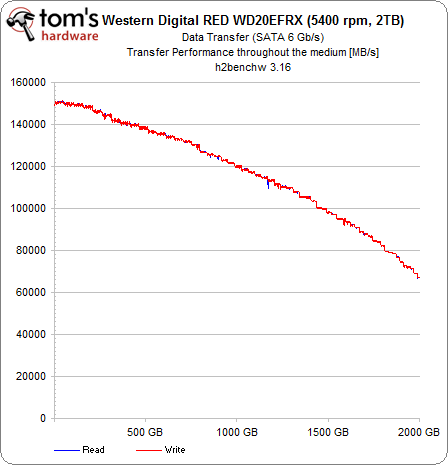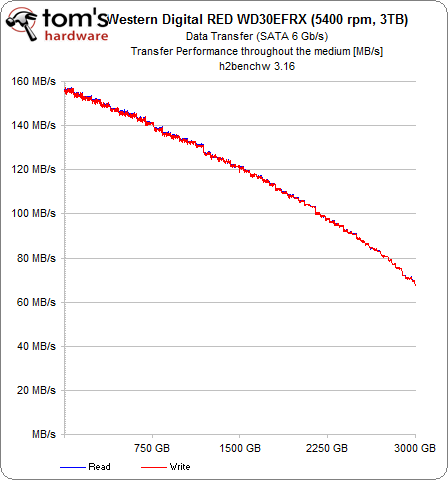Western Digital Red: NAS-Specific SATA 6Gb/s Drives, Reviewed
Western Digital just launched its new Red family of mechanical hard drives, optimized specifically for home and small office/home office (SOHO) network-attached storage devices. The company sent its 2 and 3 TB models for us to benchmark and review.
Meet Western Digital's Red
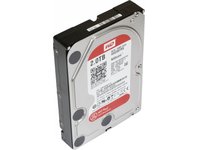
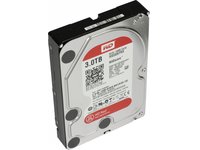
The Western Digital Red family joins the Blue (desktop drives), Green (efficiency-optimized desktop drives), and Black (performance-oriented desktop drives) line-ups. The three models in the Red series are intended for appliances with between one and five drive bays. Western Digital says that this specific range is optimized in its firmware.
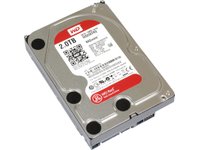

As mentioned, the Red drives boast power-on ratings of 8760 hours per year and a mean time between failure (MTBF) rating of 1 000 000 hours, on par with the pricier nearline drives out there. They don’t employ rotational vibration sensors, which is another reason they're being positioned as solutions in smaller storage systems, and not big racks loaded down with spinning disks that weather more severe vibrations.
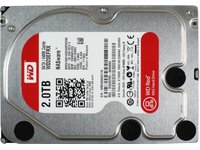
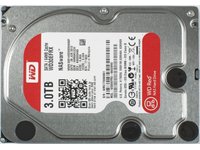
Western Digital's Red drives are composed of anywhere from one to three platters with a capacity of 1 TB each. The company doesn’t explicitly call out how fast their spindles turn. Instead, it reference its IntelliPower technology, designed designed to balance RPMs, transfer rate, and caching algorithms to increase efficiency and performance. According to our benchmarks, though, the Red drives are spinning at 5400 RPM, which is understandably slower than nearline drives that command a premium.
In turn, a combination of high data density and low rotational speed should at least impart lower power consumption and operating temperatures.
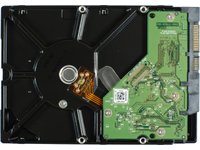
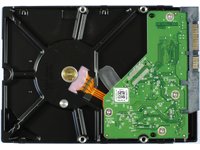
Performance
The 2 TB (WD20EFRX) and 3 TB (WD30EFRX) models demonstrate a sequential read speed of 112 MB/s. Generally, this is middle-of-the-road. However, it’s actually pretty fast compared to other 5400 RPM drives, such as Hitachi's Deskstar 5K4000, which achieves 102.9 MB/s, and Samsung's EcoGreen F4 HD204UI that achieves 100.7 MB/s.
Western Digital's Red drives really shine when it comes to power consumption and thermals. Consuming less than 4 W at idle and a maximum of 5.4 W during streaming write operations, the Reds are solidly in front of their competition. The operating temperature maintains a comparatively-frosty 31 degrees Celsius, which is about four degrees less than the other drives we benchmarked.
Get Tom's Hardware's best news and in-depth reviews, straight to your inbox.
Current page: Meet Western Digital's Red
Prev Page NAS-Oriented Hard Drives, With A Twist Next Page Technical Specifications And Test Configuration-
f-14 the reviews say these drives aren't very good, they are prone to high failure rates similar to the 1TB 7200 rpm 64mb cache caviar black drives they make. i thought maybe it was just me, but the reviews say other wise.Reply -
EzioAs Reply10445415 said:the reviews say these drives aren't very good, they are prone to high failure rates similar to the 1TB 7200 rpm 64mb cache caviar black drives they make. i thought maybe it was just me, but the reviews say other wise.
Where did you read that? I just finished reading Tom's review and found out that these are excellent in terms of power, temperature and price for SOHO NAS use. Not sure about the reliability just yet though since they are pretty new on the market. -
JeTJL Read some reviews with people experiencing their drives catching on fire.Reply
Such a shame though I would of wanted some for my new FreeNAS server. Till then I'll be using some 2.5 drives pulled from some laptops. -
enewmen I think this class of drives are needed. I hope to read more about these and some long-term tests.Reply
I personally only read good things about the Red drives - the low heat, low noise, low vibration, and low power consumption, low idle power consumption, and of course reliability are more important to me than maximum performance in its intended environment (even if some faster spinning drives have slightly more performance per watt).
Now I can't wait to put these drives in a Synology DS413 when they are released. -
mocchan I definitely need to pick up a few of these drives, they're looking pretty sweet to be honest.Reply -
epsiloneri Thanks for the review, these kind of articles are the reason I keep check in on Tom's now and then (I'm not interested in buyer's guides, hardware is what interests me). These kind of drives have really been missing from the market, the enterprise ones are just too expensive for home users.Reply
Eh, can you provide a source for that spectacular claim, or are you just trolling?10445417 said:Read some reviews with people experiencing their drives catching on fire.
-
EDVINASM epsiloneriThanks for the review, these kind of articles are the reason I keep check in on Tom's now and then (I'm not interested in buyer's guides, hardware is what interests me). These kind of drives have really been missing from the market, the enterprise ones are just too expensive for home users. Eh, can you provide a source for that spectacular claim, or are you just trolling?Reply
I second that. Nothing on Google regarding WD Red issues or fire hazards. I have ordered 2 of these and I am going to enjoy them, never mind few trolls around - I have hater blocking glasses :)
-
rantoc Caviar Green's in raid 5 or 6 depending on how much fault tolerance you need for a home nas - ftw!Reply
-
vipervoid1 f-14the reviews say these drives aren't very good, they are prone to high failure rates similar to the 1TB 7200 rpm 64mb cache caviar black drives they make. i thought maybe it was just me, but the reviews say other wise.Reply
my Black 1TB 7200rpm 32MB cache
Used for about 4 years long ~
nvr gt any problem ~ -
ZakTheEvil rantocCaviar Green's in raid 5 or 6 depending on how much fault tolerance you need for a home nas - ftw!Reply
Except that most RAID manufacturers specifically warn against using Caviar Green drives in RAID arrays due to IntelliPower technology causing problems with RAID due to their firmware not being optimized for RAID.
